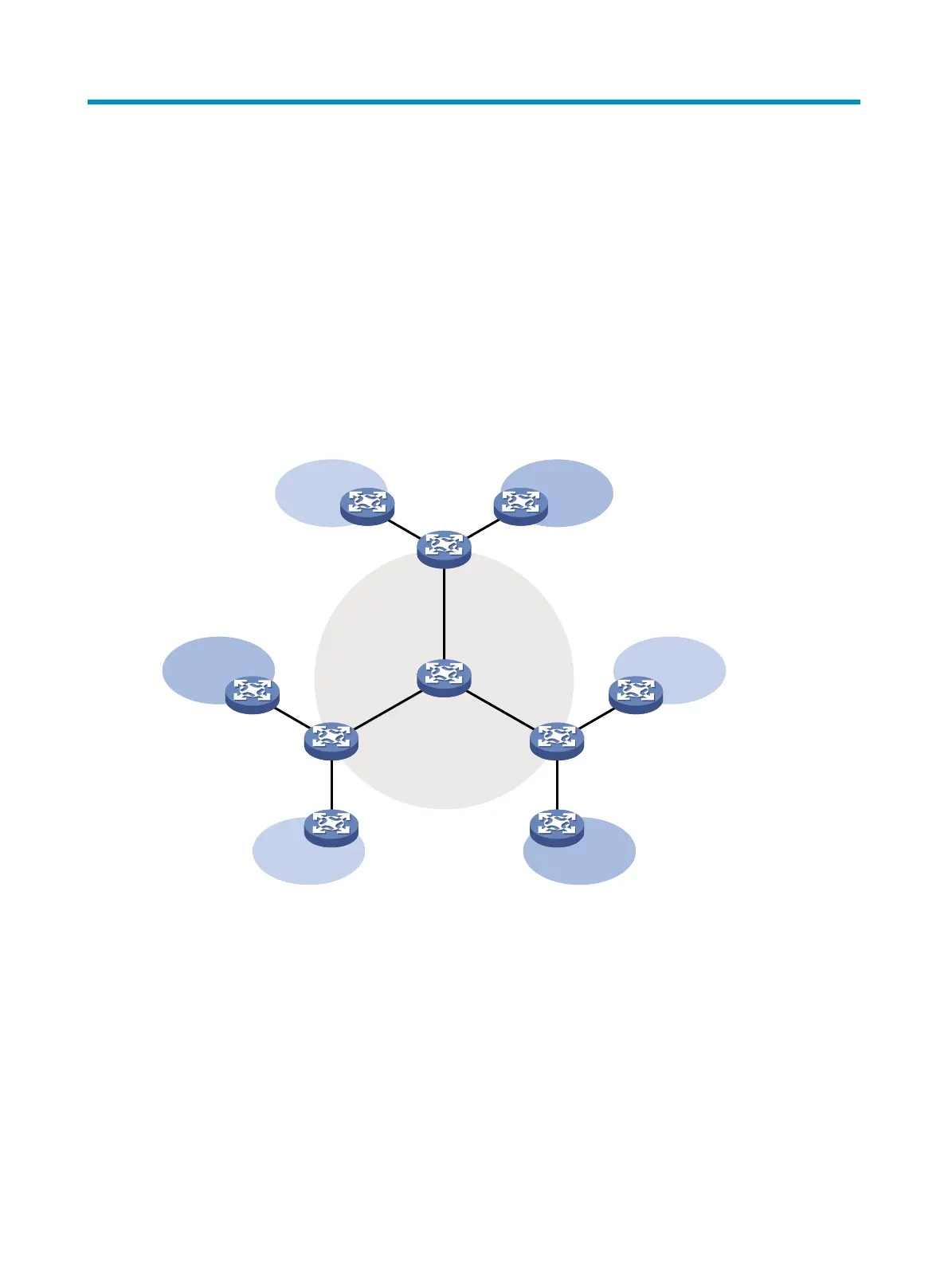171
Configuring multicast VPN
Overview
Multicast VPN is a technique that implements multicast delivery in VPNs. A VPN comprises multiple sites
of the customer network and the public network provided by the network service provider. The sites
communicate through the public network.
As shown in Figure 56:
• VPN A c
o
mprises Site 1, Site 3, and Site 5.
• VPN B comprises Site 2, Site 4, and Site 6.
Figure 56 Typical VPN networking diagram
A VPN includes the following types of devices:
• Provider (P) device—Core device on the public network. A P device does not directly connect to CE
devices.
• Provider edge (PE) device—Edge device on the public network. A PE device directly connects to one
or more customer edge (CE) devices and processes VPN routing.
• CE device—Edge device on a customer network. A CE device implements route distribution on the
customer network. The device can be a router, a switch, or a host.
As shown in Figure 56, the
network that runs multicast VPN provides independent multicast services for
the public network, VPN A, and VPN B. The multicast device PE supports multiple VPN instances and acts
as multiple independent multicast devices. Each VPN forms a plane, and all these planes are isolated
from each other. For example, in Figure 56, P
E 1 suppor
ts the public network, VPN A, and VPN B. You
VPN A
Site 1
VPN A
Site 3
VPN A
Site 5
VPN B
Site 2
VPN B
Site 4
VPN B
Site 6
PE 1
PE 2PE 3
CE 1 CE 2
CE 3
CE 4CE 5
CE 6
Public network
P

